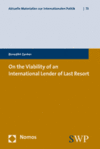APOLLON Hochschule der Gesundheitswirtschaft GmbH
Albert-Ludwigs-Universität Freiburg
Andrássy Universität Budapest | Andrássy Gyula Budapesti Német Nyelvű Egyetem
Aston University Library
Auburn University
BAR-ILAN,University, Ramat
Badische Landesbibliothek
Bauhaus-Universität Weimar
Bibliothek der Kunstakademie Düsseldorf
Bibliothekssystem Universität Hamburg
Boston College
Brandenburgische Technische Universität
Burg Giebichenstein Kunsthochschule Halle
Cambridge University Library
Centro de Estudios Políticos y Constitucionales
City University of London
College of Charleston
Commerzbibliothek, Handelskammer Hamburg
Conseil de L'Union Europeenne | Council of the European Union
DHBW Lörrach
DHBW Mosbach
Deutsche Hochschule der Polizei
Deutsche Sporthochschule Köln
Deutscher Akademischer Austauschdienst
Duale Hochschule Baden Württemberg Heidenheim
Duale Hochschule Baden-Württemberg Center for Advanced Studies
Duale Hochschule Baden-Württemberg Mannheim
Duale Hochschule Baden-Württemberg Ravensburg
Duale Hochschule Baden-Württemberg Stuttgart
Duale Hochschule Baden-Württemberg Villingen-Schwenningen
Duale Hochschule Karlsruhe
Duale Hochschule Sachsen
EC Library
Ernst-Abbe-Hochschule
European Parliament
European Union Agency for Fundamental Rights
European University Institute Badia Fiesolana
Evangelische Hochschule Darmstadt
Evangelische Hochschule Nürnberg
FH Campus Wien
FH Gesundheitsberufe OÖ GmbH
FH Oberösterreich
FHWien der WKW
Fachhochschule Aachen
Fachhochschule Burgenland (Eisenstadt)
Fachhochschule Erfurt
Fachhochschule Kiel
Fachhochschule Kufstein Tirol
Fachhochschule Kärnten
Fachhochschule Münster
Fachhochschule Potsdam
Fachhochschule Südwestfalen
Fachhochschule Vorarlberg
Fachhochschule Westküste
Filmuniversität Babelsberg KONRAD WOLF
Frankfurt School of Finance & Management
Fu Jen Catholic University
GESIS
Goethe-Universität Frankfurt am Main
HAW Hamburg
HTWG | Hochschule Konstanz für Technik, Wirtschaft und Gestaltung
HafenCity Universität Hamburg
Harvard University
Helmut-Schmidt-Universität
Herzog August Bibliothek
HfH - Hochschule für Heilpädagogik, Zürich
Hochschule Aalen
Hochschule Ansbach
Hochschule Augsburg
Hochschule Biberach | Hochschule für angewandte Wissenschaften
Hochschule Braunschweig-Wolfenbüttel
Hochschule Coburg
Hochschule Darmstadt
Hochschule Düsseldorf
Hochschule Emden/Leer
Hochschule Esslingen
Hochschule Furtwangen | Furtwangen University
Hochschule Harz
Hochschule Karlsruhe - Technik und Wirtschaft c/o KIT-Bibliothek
Hochschule Kempten
Hochschule Koblenz - Koblenz
Hochschule Magdeburg-Stendal
Hochschule Mainz
Hochschule Mittweida
Hochschule Neubrandenburg
Hochschule Niederrhein
Hochschule Nordhausen
Hochschule Offenburg
Hochschule Osnabrück
Hochschule Pforzheim
Hochschule Reutlingen
Hochschule Rhein-Waal
Hochschule Ruhr West
Hochschule Wismar
Hochschule Worms
Hochschule Zittau/Görlitz
Hochschule der Medien (HdM)
Hochschule für Forstwirtschaft Rottenburg
Hochschule für Musik und Darstellende Kunst - Bibliothek
Hochschule für Musik und Theater Hamburg
Hochschule für Musik und Theater Leipzig
Hochschule für Musik, Theater und Medien Hannover
Hochschule für Technik und Wirtschaft des Saarlandes
Hochschule für Technik und Wirtschaft, Berlin
Hochschule für Technik, Wirtschaft und Kultur Leipzig
Hochschule für Wirtschaft und Umwelt (HFWU)
Hochschule für öffentliche Verwaltung Kehl
Hochschule für öffentliche Verwaltung und Finanzen Ludwigsburg
Humboldt-Universität zu Berlin
IBFD, Finance Department | Library & Information Centre
IUBH Internationale Hochschule
International Tribunal for the Law of the Sea
Iowa State University
Johannes Gutenberg-Universität Mainz
Johannes Kepler Universität Linz
Justus-Liebig-Universität Gießen
Karlsruher Institut für Technologie
Kirchliche Pädagogische Hochschule Wien/Krems
Kunsthochschule für Medien Köln
Landesbibliothekszentrum Rheinland-Pfalz
Leuphana Universität Lüneburg
Libera Università Internazionale degli Studi Sociali "Guido Carli"
Library of Parliament of Canada
Ludwig-Maximilians-Universität München (LMU)
MCI Innsbruck
Macromedia Hamburg
Marquette University Libraries
Martin-Luther-Universität Halle-Wittenberg
Monash University
Musée du quai Branly
Nagoya University
Nomos Verlagsgesellschaft
Northern Illinois University
Národní knihovna ČR
OpenAthens
Ostbayerische Technische Hochschule (OTH) Amberg
Ostbayerische Technische Hochschule Regensburg
Otto-Friedrich-Universität Bamberg
Otto-von-Guericke-Universität Magdeburg
Phil.-Theologische Hochschule Sankt Georgen
Philipps-Universität Marburg
Pontificia Università della Santa Croce
Pontificio Istituto Orientale Biblioteca
Princeton Theological Seminary
Princeton University
Provadis Hochschule
Pädagogische Hochschule Freiburg
Pädagogische Hochschule Heidelberg
Pädagogische Hochschule Karlsruhe
Pädagogische Hochschule Ludwigsburg
Pädagogische Hochschule Schwäbisch Gmünd
Pädagogische Hochschule Weingarten
Pädagogische Hochschule Zürich
Queensland University of Technology (QUT)
RWTH Aachen
RWU Hochschule Ravensburg-Weingarten University of Applied Sciences
Rheinische Hochschule Köln
Ruhr Universität Bochum
Rutgers University Libraries
SRH Fernhochschule Riedlingen
Saarländische Universitäts- und Landesbibliothek
Staatliche Hochschule für Musik und Darstellende Kunst Mannheim
Staats- u. Universitätsbibliothek Bremen
Stadt- und Landesbibliothek Dortmund
Sächsische Landesbibliothek - Staats- und Universitätsbibliothek Dresden (SLUB)
TH Ingolstadt
Technische Hochschule Aschaffenburg
Technische Hochschule Bingen
Technische Hochschule Brandenburg
Technische Hochschule Georg Agricola
Technische Hochschule Köln
Technische Hochschule Mittelhessen
Technische Hochschule Ostwestfalen-Lippe (S(kim) Service Kommunikation Information und Medien
Technische Hochschule Rosenheim
Technische Hochschule Wildau
Technische Hochschule Würzburg-Schweinfurt
Technische Universität Berlin
Technische Universität Braunschweig
Technische Universität Dortmund
Technische Universität Hamburg-Harburg
Technische Universität Ilmenau
Tel Aviv University
Testinstitution
Thüringer Universitäts- und Landesbibliothek
Tulane University
UNISA Library
UNIVERSITY LIBRARY MORETUS PLANTIN
UNIVERSITY OF MELBOURNE
UZH Universitätsbibliothek Zürich / Zentralbibliothek Zürich
Umea University
United States Holocaust Memorial Museum
Universidad Pública de Navarra - Library
Universidad de Granada
Universidad de Huelva
Universidad de Jaén
Universidade de Lisboa
Universitat Autònoma de Barcelona
Universitat Pompeu Fabra
Universitat de Girona
University Library – Technische Universität München
University of Aberdeen
University of Basel
University of Bedfordshire
University of British Columbia
University of California
University of California San Diego
University of Central Florida
University of Cyprus
University of Delaware
University of Essex
University of Georgia Libraries
University of Johannesburg
University of Reading Library
University of South Carolina, Thomas Cooper Library
University of Sydney
Universität Augsburg
Universität Bielefeld
Universität Erlangen-Nürnberg
Universität Göttingen
Universität Hildesheim
Universität Hohenheim
Universität Konstanz
Universität Leipzig
Universität Mannheim
Universität Münster
Universität Osnabrück
Universität Pablo de Olavide
Universität Paderborn
Universität Passau
Universität Potsdam
Universität Regensburg
Universität Siegen
Universität Stuttgart
Universität Trier
Universität Vechta
Universität Würzburg
Universität der Bundeswehr München
Universität der Künste Berlin (UdK)
Universitäts- und Forschungsbibliothek Erfurt/Gotha
Universitäts- und Landesbibliothek Bonn
Universitäts- und Landesbibliothek Darmstadt
Universitäts- und Landesbibliothek Düsseldorf
Universitäts- und Stadtbibliothek Köln
Universitätsbibliothek Bayreuth
Universitätsbibliothek Duisburg-Essen
Universitätsbibliothek Eichstätt-Ingolstadt
Universitätsbibliothek Greifswald
Universitätsbibliothek Heidelberg
Universitätsbibliothek Kassel
Universitätsbibliothek Kiel
Universitätsbibliothek Koblenz
Universitätsbibliothek Rostock
Universitätsbibliothek Tübingen
Universitätsbibliothek Wuppertal
Universitätsbibliothek der FernUniversität Hagen
Université de Mons
Vinzenz Pallotti University gGmbH
Wesleyan University
Westfälische Hochschule
Württembergische Landesbibliothek
ZHAW Zürcher Hochschule für Angewandte Wissenschaften
Zentrale Hochschulbibliothek Flensburg


